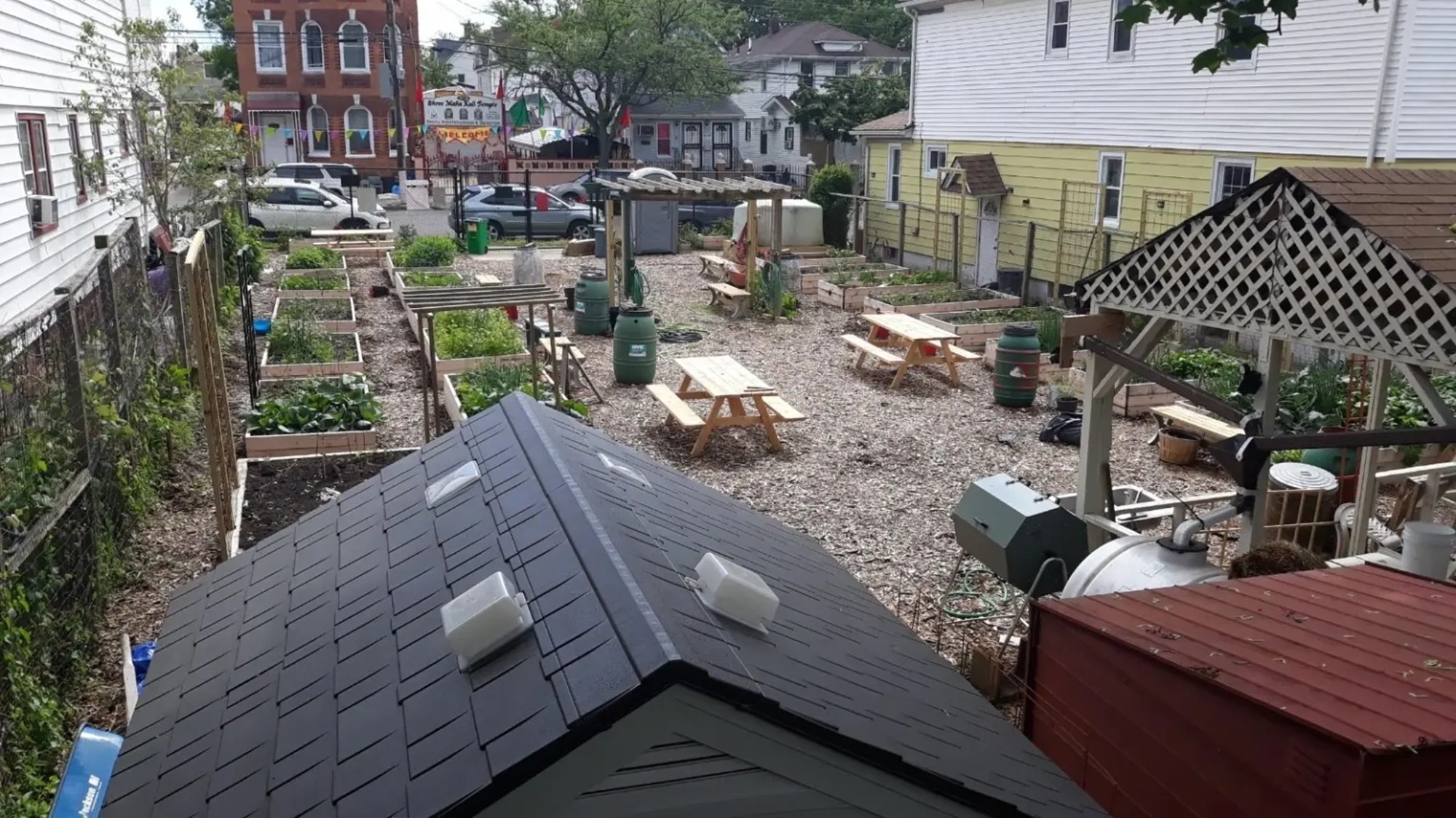California’s local clean air program for frontline neighborhoods faces uncertain future – ehn.org

A Report on California’s AB 617 Program and its Alignment with Sustainable Development Goals
Program Overview and Current Status
California’s Assembly Bill 617 (AB 617), initiated in 2017, is a legislative program facing a critical juncture regarding its funding and regulatory authority. The program was designed to empower residents in the state’s most polluted communities to actively participate in reducing local air pollution. However, its effectiveness is currently under legislative review, which will determine its future impact on community health and environmental justice.
Core Challenges to Program Efficacy
The primary obstacles limiting the success of AB 617 are structural and legislative, preventing the realization of key Sustainable Development Goals.
- Lack of Legal Authority: The program establishes local steering committees to develop community-specific air quality improvement plans, such as Richmond’s “Path to Clean Air.” These plans, while detailed, are not legally binding, rendering them advisory documents without enforcement power.
- Economic Dependencies: Communities like Richmond remain economically tied to major pollution sources, such as the Chevron refinery. This creates a conflict between the goals of pollution reduction and local economic stability, complicating the transition away from fossil fuels.
- Funding and Legislative Uncertainty: The program’s future is linked to upcoming cap-and-trade renewal negotiations in Sacramento. These discussions will determine the level of funding for AB 617 and whether to grant enforcement power to the community-developed plans.
Alignment with Sustainable Development Goals (SDGs)
The objectives and challenges of the AB 617 program are directly linked to several key SDGs. The program’s potential to achieve these goals is contingent on strengthening its enforcement mechanisms.
- SDG 3: Good Health and Well-being: The program directly addresses the adverse health impacts of industrial air pollution, including elevated rates of asthma and heart disease in frontline communities. By seeking to cut local pollution, AB 617 aims to improve health outcomes and well-being for residents.
- SDG 10: Reduced Inequalities: AB 617 is an instrument of environmental justice, targeting the disproportionate pollution burden carried by communities predominantly composed of Black, Latino, and low-income residents. Granting residents decision-making power is a direct attempt to reduce systemic inequalities.
- SDG 11: Sustainable Cities and Communities: The program’s focus on improving local air quality is central to SDG Target 11.6, which aims to reduce the adverse per capita environmental impact of cities. The success of AB 617 is crucial for making these industrial-adjacent communities more sustainable, resilient, and healthy.
- SDG 16: Peace, Justice and Strong Institutions: AB 617 attempts to build more inclusive and accountable institutions by shifting power from regulators to residents. However, the current lack of enforcement power highlights a weakness in institutional frameworks, preventing the delivery of justice and effective environmental governance.
- SDG 13: Climate Action & SDG 7: Affordable and Clean Energy: Community plans calling for a transition away from fossil fuels, as seen in the Richmond plan targeting its refinery, align with broader climate action goals. Reducing reliance on industrial polluters contributes to both mitigating climate change and advancing the shift toward cleaner energy sources.
Future Outlook
The future of the AB 617 program will determine whether California can translate its environmental policy goals into tangible health and equity improvements for its most vulnerable populations. Providing community-led air quality plans with legal enforcement power is essential for the program to move beyond symbolic gestures. The upcoming legislative session represents a critical opportunity to strengthen the program, thereby ensuring that the state makes meaningful progress toward achieving its commitments under the Sustainable Development Goals.
Which SDGs are addressed or connected to the issues highlighted in the article?
- SDG 3: Good Health and Well-being – The article directly links industrial air pollution in specific communities to negative health outcomes.
- SDG 10: Reduced Inequalities – The article highlights the environmental justice issue, where low-income, Black, and Latino communities disproportionately bear the health burdens of pollution.
- SDG 11: Sustainable Cities and Communities – The focus is on improving urban air quality and making communities safer and more sustainable, particularly for vulnerable populations.
- SDG 16: Peace, Justice and Strong Institutions – The article discusses the need for inclusive, participatory decision-making and the weakness of current institutional frameworks (AB 617) that lack enforcement power.
- SDG 7: Affordable and Clean Energy – The mention of a “transition away from fossil fuels” connects the issue to the broader goal of shifting to cleaner energy sources.
- SDG 12: Responsible Consumption and Production – The article addresses the need to manage industrial emissions, specifically from oil refineries, to reduce their environmental and health impacts.
What specific targets under those SDGs can be identified based on the article’s content?
-
SDG 3: Good Health and Well-being
- Target 3.9: By 2030, substantially reduce the number of deaths and illnesses from hazardous chemicals and air, water and soil pollution and contamination.
Explanation: The article explicitly states that communities near industrial sites “face elevated rates of asthma, heart disease, and other pollution-linked illnesses” due to “industrial air pollution.” The entire AB 617 program is an attempt to address this.
- Target 3.9: By 2030, substantially reduce the number of deaths and illnesses from hazardous chemicals and air, water and soil pollution and contamination.
-
SDG 10: Reduced Inequalities
- Target 10.2: By 2030, empower and promote the social, economic and political inclusion of all, irrespective of… race, ethnicity… or economic or other status.
Explanation: The article notes that polluted areas are “often home to Black, Latino, and low-income residents.” The AB 617 program, which “attempt[s] to shift decision-making power from regulators to residents,” is a direct effort to empower these specific communities and include them in environmental policy-making.
- Target 10.2: By 2030, empower and promote the social, economic and political inclusion of all, irrespective of… race, ethnicity… or economic or other status.
-
SDG 11: Sustainable Cities and Communities
- Target 11.6: By 2030, reduce the adverse per capita environmental impact of cities, including by paying special attention to air quality.
Explanation: The article’s central theme is the effort to “cut local air pollution” in “heavily polluted communities” within California. The “Path to Clean Air” plan is a direct example of a policy aimed at improving urban air quality.
- Target 11.6: By 2030, reduce the adverse per capita environmental impact of cities, including by paying special attention to air quality.
-
SDG 16: Peace, Justice and Strong Institutions
- Target 16.7: Ensure responsive, inclusive, participatory and representative decision-making at all levels.
Explanation: The AB 617 program “created local steering committees to craft air quality improvement plans,” which is a form of participatory decision-making. However, the article critiques its effectiveness by noting these plans “lack legal authority” and that there is a push to “give community plans enforcement power,” highlighting the need for more responsive institutions.
- Target 16.7: Ensure responsive, inclusive, participatory and representative decision-making at all levels.
-
SDG 7: Affordable and Clean Energy
- Target 7.2: By 2030, increase substantially the share of renewable energy in the global energy mix.
Explanation: The article mentions that Richmond’s “Path to Clean Air” plan “calls for a transition away from fossil fuels,” which directly aligns with the goal of increasing the share of clean and renewable energy.
- Target 7.2: By 2030, increase substantially the share of renewable energy in the global energy mix.
-
SDG 12: Responsible Consumption and Production
- Target 12.4: By 2020, achieve the environmentally sound management of chemicals and all wastes throughout their life cycle… and significantly reduce their release to air… in order to minimize their adverse impacts on human health and the environment.
Explanation: The article details community efforts to reduce pollution from industrial sources, specifically mentioning that the Richmond plan “targets Chevron’s refinery emissions.” This is a direct attempt to manage and reduce the release of pollutants into the air.
- Target 12.4: By 2020, achieve the environmentally sound management of chemicals and all wastes throughout their life cycle… and significantly reduce their release to air… in order to minimize their adverse impacts on human health and the environment.
Are there any indicators mentioned or implied in the article that can be used to measure progress towards the identified targets?
-
For Target 3.9 (Health Impacts)
- Implied Indicator: Morbidity rates from pollution-linked illnesses.
Explanation: The article mentions “elevated rates of asthma, heart disease, and other pollution-linked illnesses.” A reduction in the incidence of these specific diseases in the affected communities would be a key indicator of progress.
- Implied Indicator: Morbidity rates from pollution-linked illnesses.
-
For Target 11.6 (Air Quality)
- Implied Indicator: Levels of local air pollutants.
Explanation: The article discusses “heavily polluted communities” and plans to “cut local air pollution.” Measuring the concentration of specific pollutants (like those from refinery emissions) in the air of these communities is the most direct way to track progress.
- Implied Indicator: Levels of local air pollutants.
-
For Target 10.2 (Inclusion)
- Implied Indicator: Proportion of population in polluted areas, disaggregated by race and income.
Explanation: The article states that polluted areas are “often home to Black, Latino, and low-income residents.” Measuring whether the pollution burden is reduced for these specific demographic groups would indicate progress toward reducing this inequality.
- Implied Indicator: Proportion of population in polluted areas, disaggregated by race and income.
-
For Target 16.7 (Participatory Decision-Making)
- Mentioned Indicator: The legal authority of community-developed plans.
Explanation: The article explicitly states that community plans “lack legal authority” and that a key debate is whether to “give community plans enforcement power.” Therefore, the existence of legally binding, community-led environmental plans would be a direct indicator of progress.
- Mentioned Indicator: The legal authority of community-developed plans.
Table of SDGs, Targets, and Indicators
| SDGs | Targets | Indicators (Mentioned or Implied in Article) |
|---|---|---|
| SDG 3: Good Health and Well-being | 3.9: Reduce deaths and illnesses from hazardous chemicals and air pollution. | Rates of asthma, heart disease, and other pollution-linked illnesses in affected communities. |
| SDG 10: Reduced Inequalities | 10.2: Empower and promote the social, economic and political inclusion of all. | Reduction in the disproportionate pollution burden on Black, Latino, and low-income communities. |
| SDG 11: Sustainable Cities and Communities | 11.6: Reduce the adverse per capita environmental impact of cities, paying special attention to air quality. | Measured levels of local air pollution in communities near refineries, ports, and highways. |
| SDG 16: Peace, Justice and Strong Institutions | 16.7: Ensure responsive, inclusive, and participatory decision-making. | The legal status and enforcement power of community-crafted air quality improvement plans. |
| SDG 7: Affordable and Clean Energy | 7.2: Increase substantially the share of renewable energy. | Progress on the “transition away from fossil fuels” as called for in local plans. |
| SDG 12: Responsible Consumption and Production | 12.4: Achieve environmentally sound management of chemicals and reduce their release to air. | Measured reduction in emissions from specific industrial sources like the Chevron refinery. |
Source: ehn.org

What is Your Reaction?
 Like
1
Like
1
 Dislike
1
Dislike
1
 Love
1
Love
1
 Funny
0
Funny
0
 Angry
0
Angry
0
 Sad
0
Sad
0
 Wow
0
Wow
0










/campaigns/16-days-of-activism-against-gender-based-violence/pr-web-banner.tmb-1200v.jpg?sfvrsn=8cc7b98e_1#)




































































